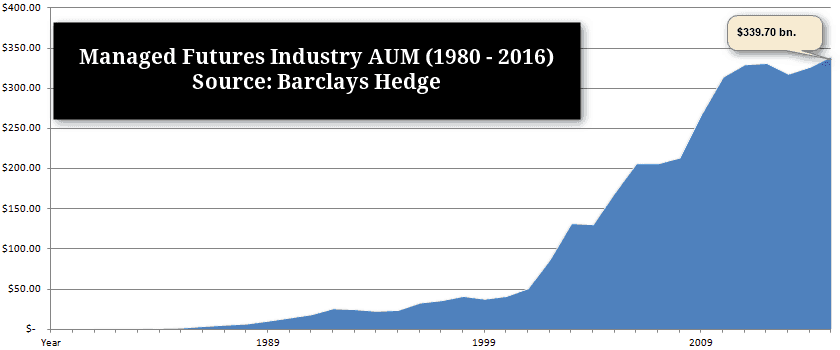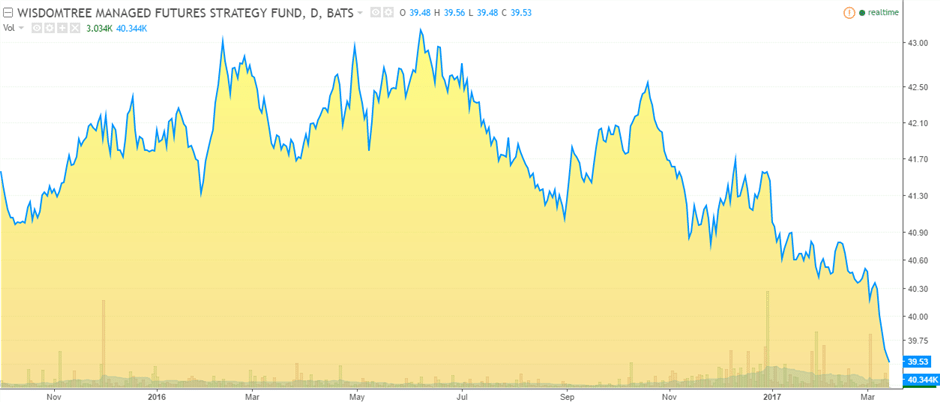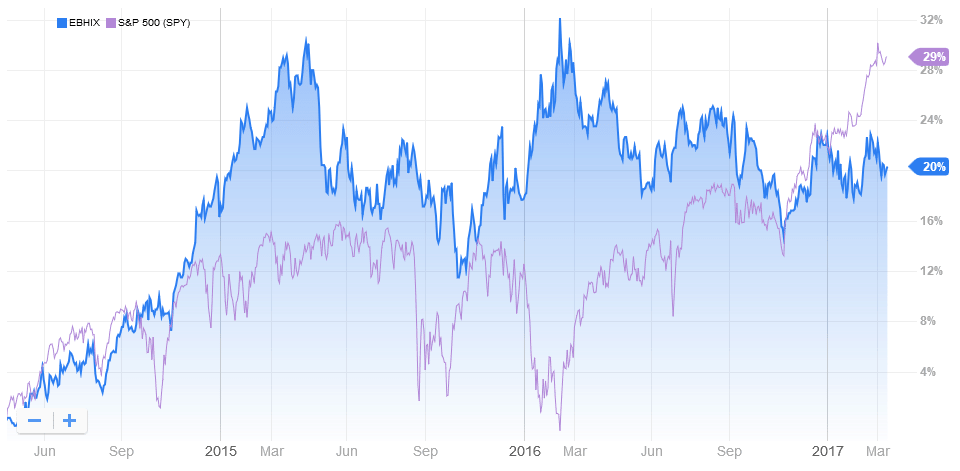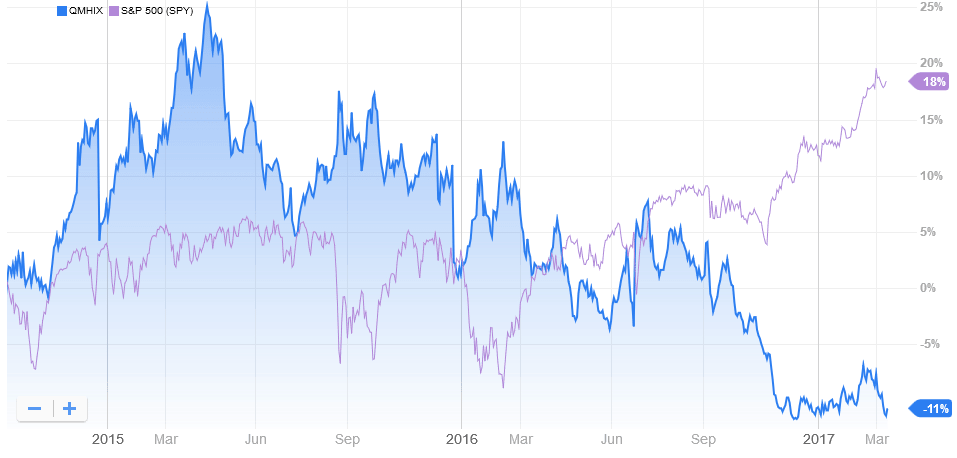Managed futures hedge funds have existed since the start of the regulated futures markets in the U.S. and have offered an alternate option for investors who wanted a different kind of exposure and away from the usual assets.
The most famous of all managed futures hedge funds was run by the famous Richard Donchian who started his publicly managed futures fund, Futures Inc. in 1949.
Donchian and his fund gained prominence of course for his Turtle Trading experiment. His ruled based, trend following strategy was and still remains to this day one of the most widely discussed and used technical trading system.
Since the inception of managed futures funds, the industry has grown by leaps and bounds. Still, managed futures funds are said to be one of the least understood investment often used synonymously with high management fees.
As the futures industry evolved, expanding beyond the usual agriculture and commodities and introducing financial, index and treasury futures, the futures funds industry also started to grow, building upon the wide range of financial instruments now available for trading.
Managed futures funds trade not just futures but also other derivatives including swaps and options. There are also managed futures that have exposure to other managed futures ETFs and mutual funds.
The futures instruments such as the S&P500 futures, or the interest rate futures offered investors an alternative option for trading or investing besides the stock markets and bonds. Furthermore, the ability to go long or short made the futures hedge funds companies to stand out as the flexibility allowed them to make profits from rising and falling markets.
This was a big change, compared to the equity markets where most of the financial firms were long only funds, and investing was more long term. In comparison, the futures markets liquidity made it possible for CTA’s to build their proprietary trading systems to trade the markets.
Managed futures funds refer to the futures and forward contracts trading on the commodities and the financial instruments. These are primarily traded by the trading advisors who manage the money of their clients.
Thus, the managed futures funds was made up of regulated money managers who were authorized to trade and manage their clients’ funds based on a rule based mechanical or a discretionary trading system.
What is a managed futures funds?
Managed futures accounts or MFA for short are also referred to as managed futures funds (MFF). These are an alternative type of investment which focuses on trading the futures market by a money manager or a fund manager.
To put this even more plainly, a managed futures fund is like a mutual fund for futures. The managed futures funds are generally operated by a commodity trading advisor, also known as a CTA or commodity pool operators or CPO.
The CTA or a CPO must be licensed and are regulated by the Commodity Futures Trading Commission (CFTC) and the National Futures Association (NFA). The CTA’s manage the client’s assets making use of a proprietary trading system. A CTA operates similar to that of a hedge fund and in most cases a CTA can be part of a hedge fund. However, the CTA primarily focuses on trading the futures markets which can span across commodities, agriculture, interest rates, and bonds among other futures contracts.
The managed futures fund is quite a large market by its own standards. According to Barclays Hedge, an independent alternative investment database company, the fourth quarter of 2016 saw the total managed futures to the tune of $339.7 billion.
The graph below shows the growth of the commodity trading advisor (CTA) and commodity pool operator (CPO) based managed futures funds industry which has been steadily growing since 2009.

Managed futures funds, from 1980 – 2016. Source – Barclays Hedge
The managed futures industry has witnessed tremendous increase since the 1970’s. As the graph above shows, in the 1980’s less than 500 million U.S. dollars were invested, but this amount grew significantly.
One of the reasons was the demands by investors for tracking higher returns investments, which has led to the sudden growth in this sector.
What is a commodity trading advisor?
According to the Commodity Futures Trading Commission (CFTC), a CTA or a commodity trading advisor is a person who directly or indirectly advises others on the buying or selling of commodity futures or options contract, for a profit or being compensated for their advice.
What is a commodity pool operator?
The Commodity Pool Operator or CPO is defined by the CFTC as a person or a firm that operates or solicits funds to form a commodity pool. The investor funds are pooled and the commodity pool is organized as a limited liability partnership. The CPO’s make use of the commodity trading advisors to make the trading decisions.
How to invest in managed futures?
Investing in managed futures can be done in many ways and is determined by the amount of money and the returns one expects.
The simplest way to invest in a managed futures account is to purchase shares of a public commodity pool fund. These funds are structured similar to equity or a mutual fund. Of course, the difference here is being that the fund focuses only on trading the futures markets.
Public commodity pool funds are the easiest as it allows for retail investors to participate in the fund. It should also be obvious that the commodity investment pool also requires the lowest investment amounts to get started.
A second option for managed futures is to invest in a private CPO. The price CPO is a select club and is not open to the public. The private CPI basically pools the funds from their investors and the CTA trade these funds. The private CPO of course has a higher requirement in terms of the initial investment that can be done.
Another option is to invest in a fund directly managed by the CTA. In this type, the major difference is that the commodity trading advisor primarily trades with own money. Thus, the initial investment fees are often reasonable and balanced between a public CPO and a private CPO.
However, there are always exceptions to the case as there are instances where the CTA managed funds can require higher investments than investing in a private CPO.
Finally, investors can look at the ETF sector as well which has a collection of some good managed futures exchange traded funds.
What are the top 3 Managed futures funds?
When looking at the managed futures funds, we opt for a mix of ETFs and mutual funds that have exposure to the managed futures strategies as it is easy to invest in such funds compared to investing directly to a CTA managed fund or a closed CPO.
There is also a lot more transparency when utilizing an ETF or a mutual fund.
1. The WisdomTree managed futures strategy fund
The WisdomTree managed futures strategy fund (WDTI) is issued by WisdomTree and has been functional since 2011. The WDTI is an exchange traded fund (ETF) has an expense ratio of 0.95% and boasts of total Assets under Management (AUM) of $186.7 million.

WisdomTree Managed Futures Strategy Fund (WDTI)
WisdomTree Managed Futures Strategy Fund (WDTI)
WDTI ETF is often the go to ETF when it comes to managed futures fund for the average retail investor. Because of its asset classes, the WDTI can be both long and short on a number of asset classes that it trades. The WDTI is known for its low volatility and can generate returns in any type of market.
The WDTI is of course actively managed. Interestingly, WDTI has close to 39% exposure on another managed futures mutual fund called the Wt Cayman Managed futures mutual fund.
Other holdings under WDTI include copper, cotton, U.S bonds, 10 year notes to name a few. The unique feature of the WisdomTree Managed futures strategy is that because it is listed as an ETF, investors can directly diversify their portfolio exposure towards the managed futures sector via this ETF.
2. Equinox BH-DG strategy fund
The fund seeks long term capital appreciation and structures its investment objective based on directly investing in a combination of fixed income, cash and cash equivalent and securities that are issued by the U.S. government.
The managed futures mutual fund has close to $34 million in total assets. The chart below shows the comparison of the returns from the Equinox BH-DG strategy and the S&500 since July 2014.

EBHIX Mutual Fund comparison to S&P500
The Equinox BH-DG mutual fund has an indirect exposure to the managed futures via its holdings on a subsidiary company BH-DG systematic trading LLP, which is a commodity pool.
Thus, investing in the Equinox BH-DG mutual fund, which is ranked 4/4 by Morningstar is a second alternative. Investors should however bear in mind that the expense ratio is 1.10% and there is also a management fee of 0.75%, which can be slightly expensive.
The Equinox BH-DG has returned -5.49% over the past year and has a 3-year return of 5.45%. Investors need to have a minimum of $25,000 to invest in the Equinox BH-DG strategy fund.
3. AQR Managed Futures Strategy HV Fund
The AQR Managed Futures Strategy HV Fund is the third managed futures fund. The fund is structured as a mutual fund and seeks absolute positive returns.
The fund however has been in a losing streak since mid-2014, down over 11%, compared to the 18% gain in the S&P500.

AQR Managed Futures Strategy HV Fund
The AQR Managed Futures Strategy HV Fund (QMHIX) distributes its assets among the major asset classes spanning across commodities, currencies, fixed income and equities. The QMHIX fund has a total of $714.04 million in assets managed.
The fund has exposure to more than 100 futures contracts, including forwards, swaps as well as equity index futures. The fund has a diverse list of futures contracts which it holds such as interest rate futures and bond futures.
Some of the top holdings from th AQR Managed futures funds include the 90-day Eurodollar futures, 3-month euribor futures and 90-day sterling futures. The QMHIX fund has returned 2.79% over the past three years and has a net expense ratio of 1.61% and a rather high management fee of 1.45%.
Are there any benefits with a managed futures fund?
Investing in a managed futures fund can offer some benefits to investors, but it depends on one’s investment goals and risk tolerance. One of the major reasons for utilizing a managed futures fund account is to lower the overall investment risk or portfolio risk.
The reason why managed futures funds can help in reducing the risk in the portfolio is because managed futures are part of an alternative investment class and more often than not, the returns have been on par if not higher compared to the equity benchmark returns.
There have been quite a few academic studies conducted into the futures markets as well which supports the idea that a combination of traditional investments alongside the alternative investment assets can help to bring down the portfolio’s risk.
Money managers can spread their risks across a wide range of markets, from trading grains to precious metals, commodities and even financial contracts such as the S&P500 index and interest rates. This wide diversification makes it easy for managed futures to manage their exposure to an asset group.
Investing in a managed futures fund allows the investors to balance their portfolio. For example, if inflation was seen rising, managed futures funds that trade the precious metals can offer higher returns compared to the equity markets which can have lower returns.
In conclusion, investors should be aware of the fact that while investing in a managed futures fund can help to reduce the portfolio risk, it is by no means a guarantee. There is an equal chance that a managed futures fund investment can do just the opposite and increase risk for the investor.
The managed futures funds covered in this article are based on the funds that have exposure to the futures markets, but investors can also look for other custom managed futures funds based on their investment requirements such as the initial capital, risk and the way the fund has an exposure to the futures markets.











 Commodity Futures
Commodity Futures 
